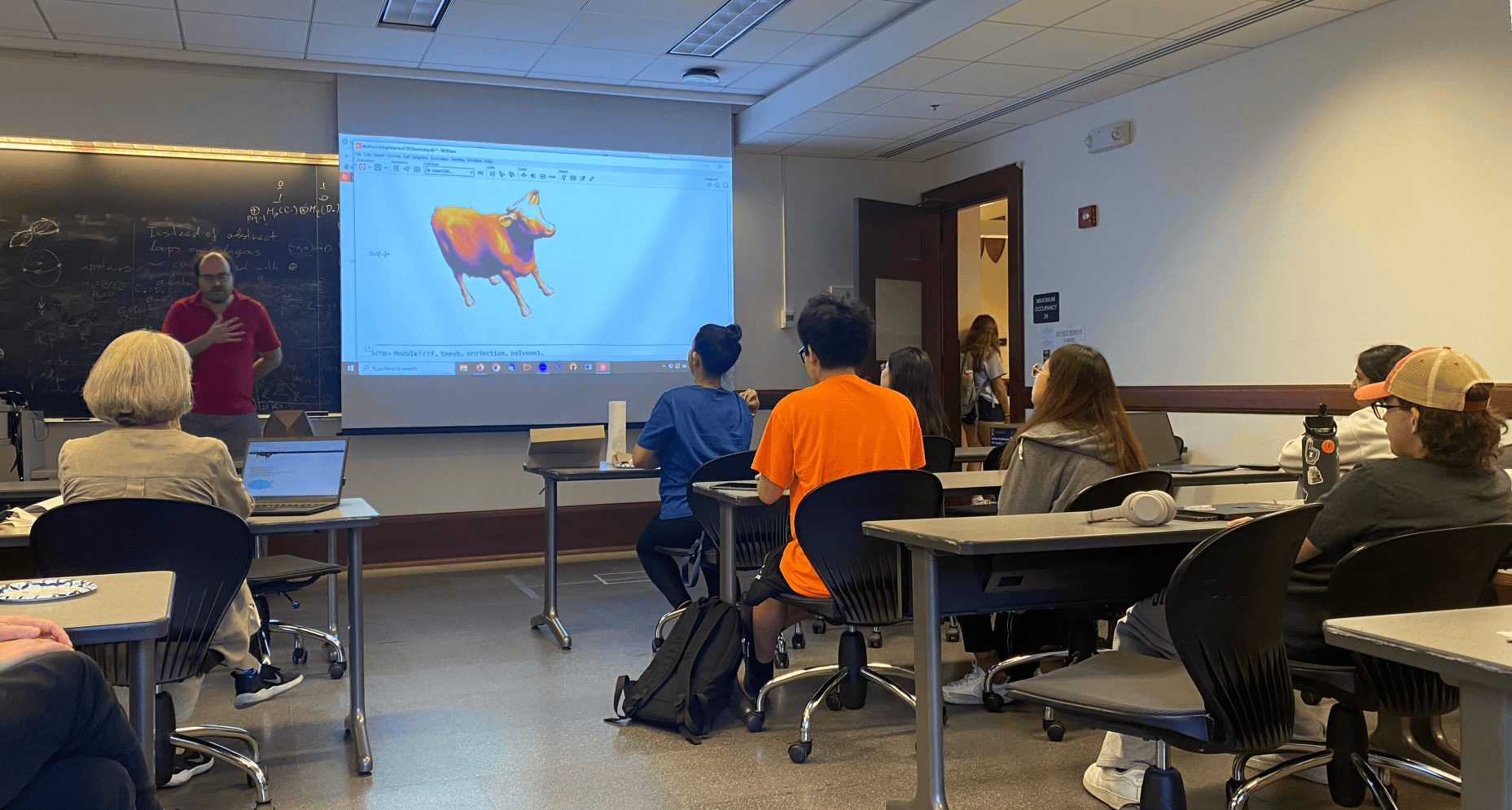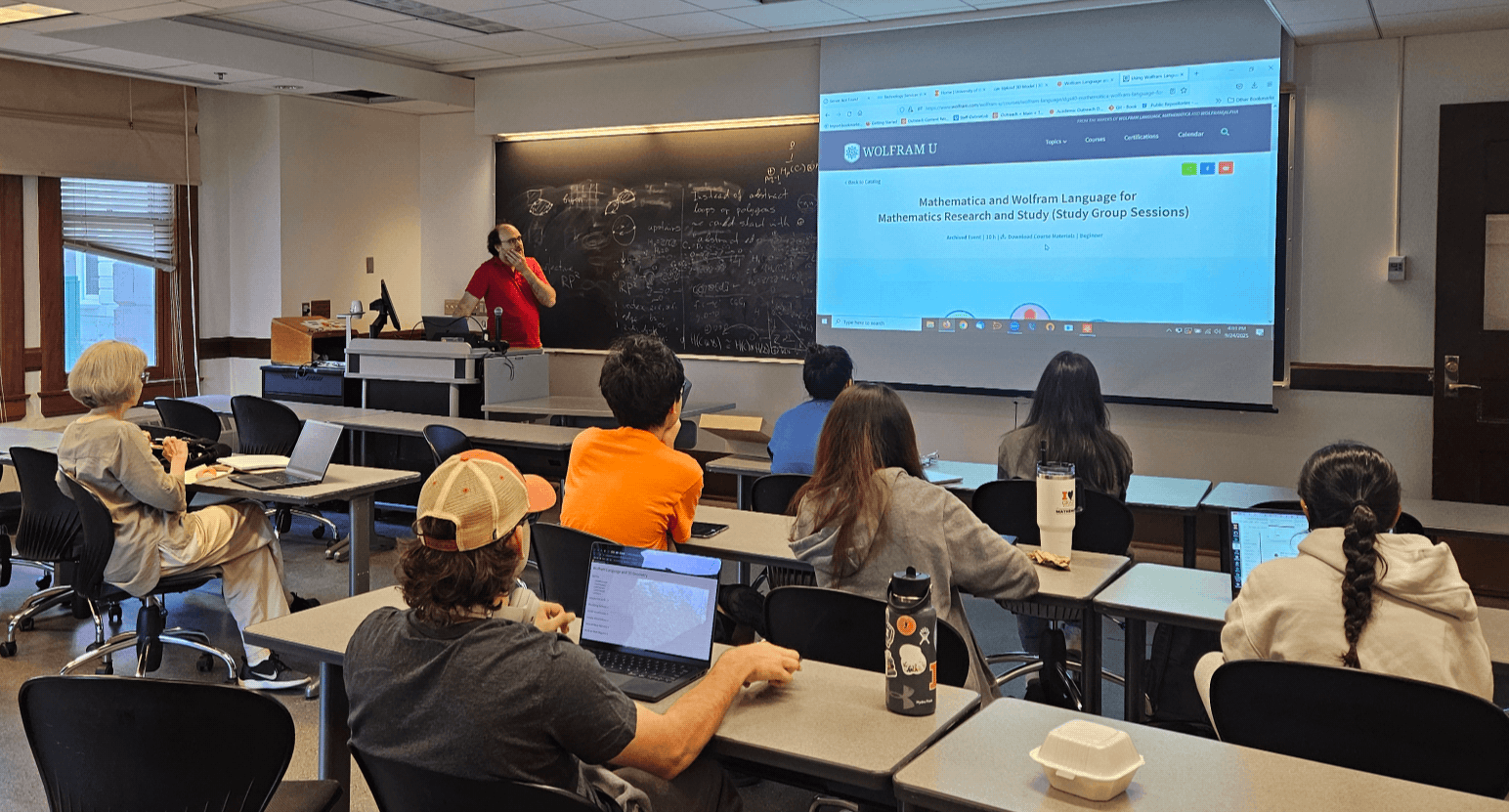Designing & Visualizing Mathematical Structureswith Wolfram Language
A hands-on workshop that moved quickly fromsymbolic expressions toprintable models.

The "Spherical Cow" demonstration bringing mathematical humor to life
"Thank you so much for visiting our campus and teaching the student groups how to design 3D models for printing with Mathematica. Before your presentation, I had only a basic understanding of Mathematica, but what you shared with us was truly inspiring."
What Made It Special
Expression Trees as an Intuitive Bridge
Our presenter, John McNally, used expression trees to connect mathematical reasoning to Wolfram syntax.
Demystifying the "Evaluate" Step
We clarified one of the most common stumbling blocks: why plots sometimes fail without explicit evaluation.
From Regions to Print-Ready Meshes
Beyond visualization, the group learned to discretize analytic geometry into exportable, validated meshes for 3D printing.
The "Spherical Cow" Moment
To keep things lively, we modeled the classic "spherical cow" to show how to extend approximations into richer, more realistic models, illustrating both the fun and the rigor of computational modeling.
Who Joined Us

Math-savvy students
new to Wolfram Language who wanted an intuitive introduction
Makers and designers
eager to turn formulas into physical prototypes
Faculty and leaders
exploring reproducible workflows for teaching and research
What We Shared
Rather than just showcasing commands, the session deliveredtransferable patternsthat participants could take back to their labs and projects:
- 01
How Wolfram Language's built-in 3D algorithms construct exact geometry and meshes.
- 02
Performance-savvy visualization techniques, including why some plots need
Evaluate[...]to behave correctly. - 03
A practical pipeline to 3D printing, from analytic definitions of regions to STL meshes.
Hosting This Workshop on Your Campus
We tailor sessions for physics, math, engineering, architecture, and design programs, as well as for student clubs and makerspaces.
Format Options
- • 30-minute demo
- • 1-hour hands-on workshop
- • Online or In-person options
Outcomes
- • Mental models for learning computation
- • Toolkit for modeling and visualization
- • Reusable code snippets